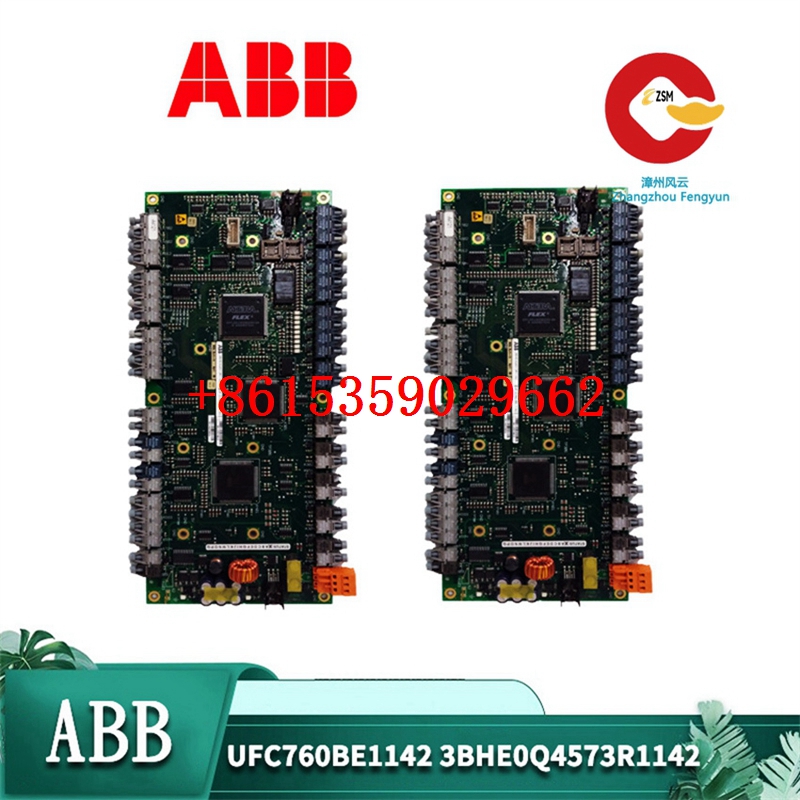Technical Parameters of ABB 3BSE018165R1 PR:C PM864 – 1A Board (Removed from 3BSE018162R1 PR:F PM864A)
1. General Overview

The ABB 3BSE018165R1 PR:C PM864 – 1A board is a key component within ABB’s automation and control systems. It is originally part of the 3BSE018162R1 PR:F PM864A system. This board plays a crucial role in the processing, communication, and control functions of industrial automation applications, ensuring reliable and efficient operation of machinery and processes.
2. Processor and Computing Performance
2.1 Processor Type and Speed
- The PM864 – 1A board is equipped with a high – performance processor. Although specific processor model details may not be publicly disclosed in a highly technical sense, it is designed to handle complex control algorithms and real – time data processing tasks. The processor operates at a clock speed that allows it to execute a large number of instructions per second, enabling rapid response to input signals and changes in the industrial environment.
- For example, in a typical industrial control scenario where multiple sensors are providing data and multiple actuators need to be controlled simultaneously, the processor can quickly process the sensor data, make decisions based on the control logic, and send appropriate control signals to the actuators.
2.2 Memory Capacity
- RAM: The board has a sufficient amount of Random Access Memory (RAM) to store temporary data during the execution of control programs. This RAM allows for fast data access and manipulation, which is essential for real – time control applications. A larger RAM capacity enables the board to handle more complex control algorithms and larger data sets without experiencing performance degradation.
- Flash Memory: It also includes Flash memory for storing the control programs, configuration data, and other non – volatile information. The Flash memory ensures that the control programs and settings are retained even when the power is turned off, allowing for quick startup and consistent operation of the automation system.
3. Communication Interfaces
3.1 Ethernet Communication
- The PM864 – 1A board supports Ethernet communication, which is a widely used standard in industrial automation networks. It can be connected to a local area network (LAN) or a wide area network (WAN) to enable communication with other devices in the automation system, such as programmable logic controllers (PLCs), human – machine interfaces (HMIs), and supervisory control and data acquisition (SCADA) systems.
- Ethernet communication allows for high – speed data transfer, enabling real – time monitoring and control of the industrial processes. For instance, it can be used to transmit process data, alarm signals, and configuration changes between different devices in the network.
3.2 Serial Communication
- In addition to Ethernet, the board may have serial communication ports, such as RS – 232 or RS – 485. Serial communication is useful for connecting to legacy devices or for short – range communication in industrial environments where simplicity and cost – effectiveness are important.
- For example, it can be used to connect to a local sensor or a small actuator that only supports serial communication.
4. Input/Output (I/O) Capabilities
4.1 Digital I/O
- Digital Inputs: The board provides a certain number of digital input channels. These channels can be used to receive signals from various digital sensors, such as limit switches, proximity sensors, or digital encoders. The input voltage range is designed to be compatible with standard industrial signal levels, ensuring reliable signal detection.
- Digital Outputs: It also has digital output channels that can be used to control digital devices, such as relays, contactors, or indicators. The output current and voltage ratings are sufficient to drive a wide range of industrial loads, and the outputs can be configured for different operation modes, such as pulse – width modulation (PWM) for speed control of motors.
4.2 Analog I/O (if applicable)
- Depending on the specific configuration, the PM864 – 1A board may have analog input and output channels. Analog inputs can be used to receive continuous – valued signals from analog sensors, such as temperature sensors, pressure sensors, or position sensors. The analog – to – digital converter (ADC) on the board has a high resolution, allowing for accurate measurement of small signal changes.
- Analog outputs can be used to generate continuous control signals for analog devices, like variable – frequency drives (VFDs) for motor speed control. The digital – to – analog converter (DAC) on the board ensures high – precision output signal generation.
5. Power Requirements
5.1 Input Voltage Range
- The PM864 – 1A board operates on a specified input voltage range, which is typically in line with standard industrial power supplies. This ensures compatibility with a wide range of power sources in industrial facilities. For example, it may operate on a 24 V DC power supply, which is commonly used in industrial control systems.
5.2 Power Consumption
- It has a defined power consumption level, which is important for system designers to consider when planning the power distribution within the control cabinet. The power consumption varies depending on the operating mode and the load on the I/O channels. For instance, during normal operation with a moderate number of I/O devices connected, the power consumption may be in the range of a few watts.
6. Environmental Specifications
6.1 Operating Temperature Range
- The board is designed to operate within a specific temperature range, which is suitable for most industrial environments. It can withstand both high and low temperatures, ensuring reliable performance even in challenging conditions, such as in a factory with high ambient heat or in a cold storage facility. A typical operating temperature range may be from – 20°C to + 60°C.
6.2 Humidity Tolerance
- It has a certain level of humidity tolerance, which is important for preventing damage from moisture in the air. This allows the board to be used in environments with varying humidity levels, from dry to moderately humid.
6.3 Vibration and Shock Resistance
- The PM864 – 1A board is built to withstand a certain level of vibration and shock, which is common in industrial machinery. This ensures that it can continue to function properly even when the equipment it is controlling is subject to mechanical vibrations or sudden impacts.
In summary, the ABB 3BSE018165R1 PR:C PM864 – 1A board is a feature – rich and reliable component that offers high – performance computing, versatile communication interfaces, I/O capabilities, and environmental durability, making it suitable for a wide range of industrial automation applications.


